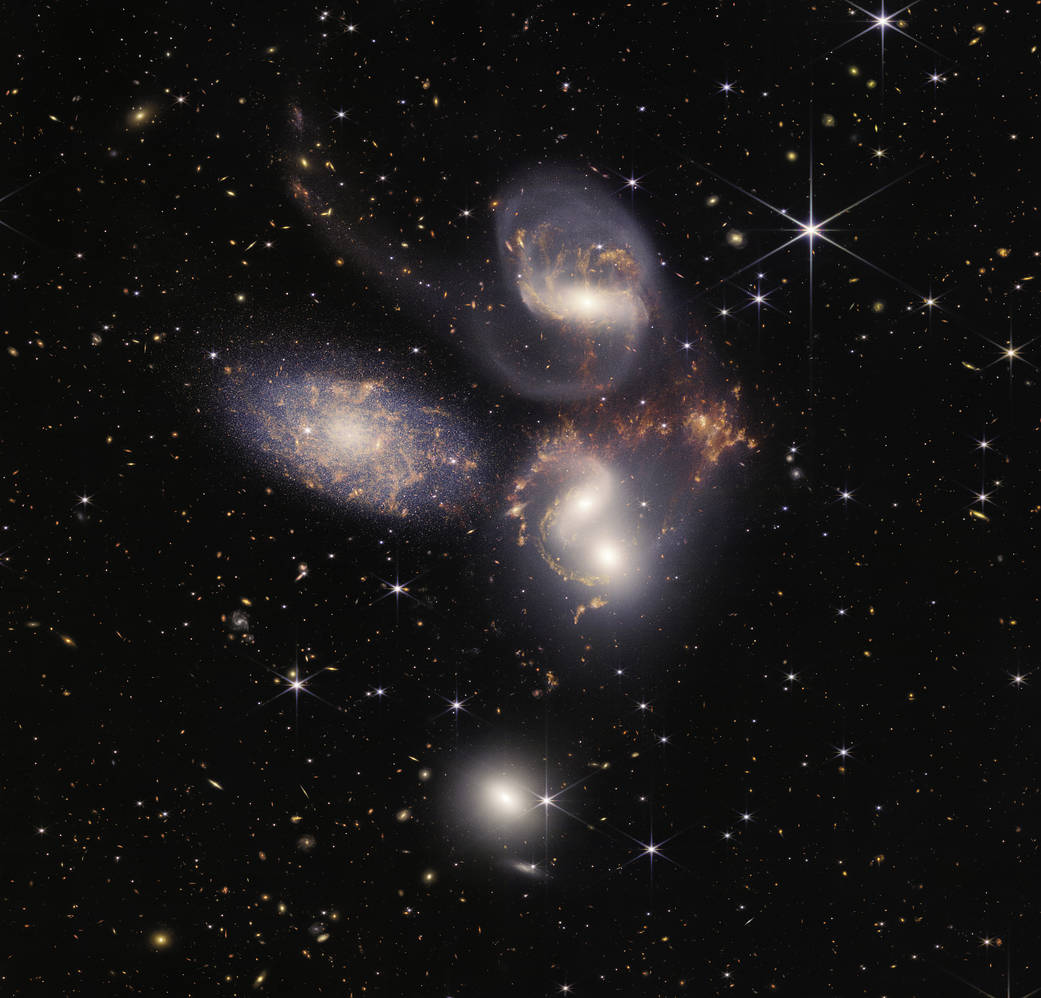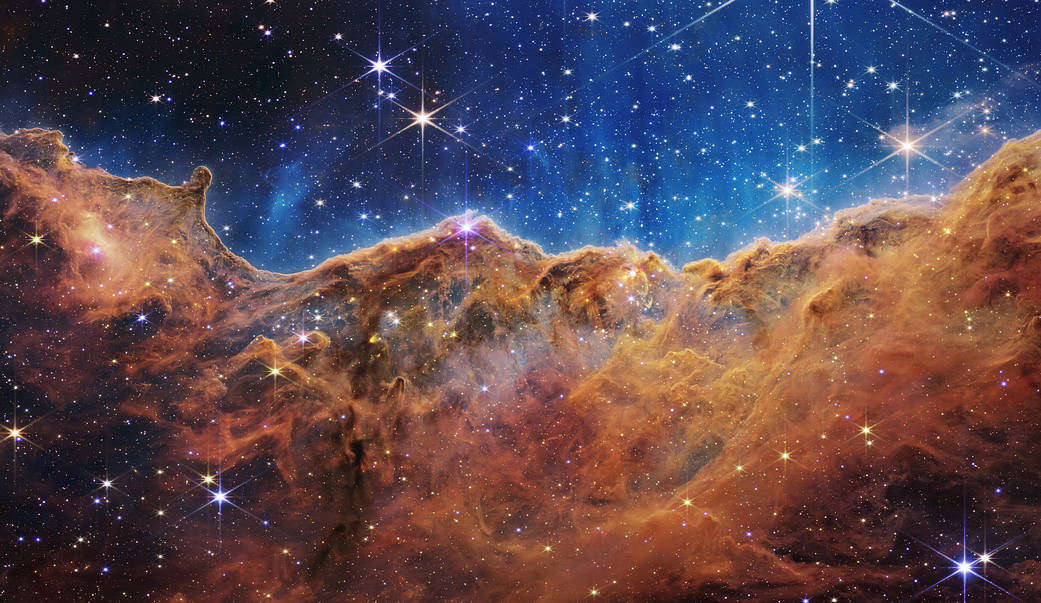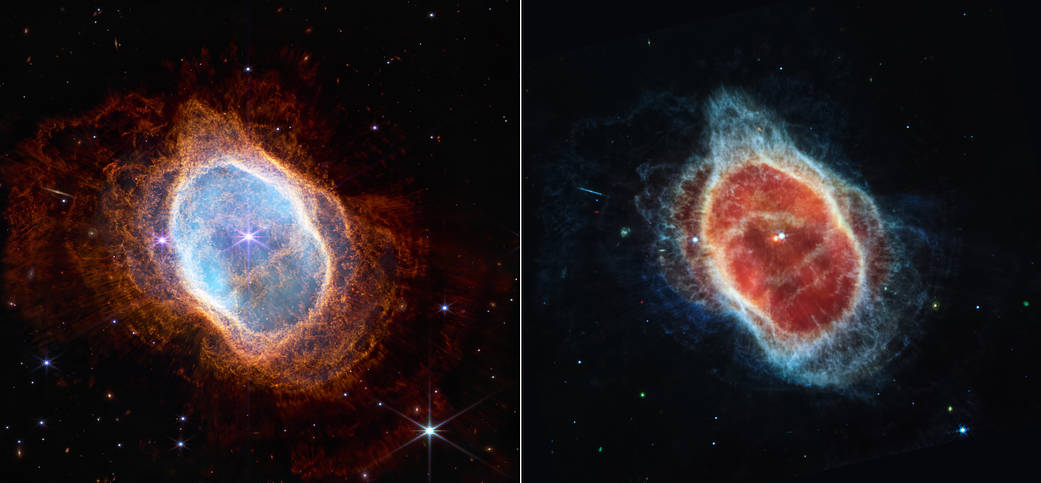With all our "BIG problems" in the world, it is worth pausing for a moment to note this BIG announcement today, the first of many to come:

HOWEVER, I remind my fellow Zennies that, in our Zen and Mahayana teachings, "BIG and small" are not necessarily what they first appear! To begin, when looking at the vastness of "SMACS 0723" you are looking at but yourself, as much as looking at your own finger tip (However, do not let that go to your head ... because SMACS 0723 is also every blade of grass, rusty nail, atom and dewdrop, stone and creature, everywhere on earth and everywhere in the rest of the universe too. But then again, every blade of grass and rusty nail is just you too, and you them, and each other.) In any case, it is not "BIG" while you are "small" because you are it, it is you, and each and every other thing too. SMACS 0723 is no bigger or smaller than you, for it is you.
Mathematicians will tell you that the center of the Big Bang is every place and everywhere (like every point on the surface of a sphere having equal claim to being the center of the sphere. SMACS 0723 sits at the center of the universe ... but so does every place and thing, so do you (not only when one sits Zazen!).
BIG and small are relative. Yes, even a tiny grain of sand, properly placed, can cover and fully hide SMACS 0723. A grain of sand is vast when held close to the eye and, should we really seek to explore every nook and cranny of that one grain, slowly and probing ever deeper, it would take billions of years, infinite time in fact depending on our speed in doing so and care in going slow, really looking. A grain of sand is also its own galaxy of infinite features. In any case SMACS 0723 is just a small corner of the universe itself, tiny in comparison to the rest ... and yet it is also everything, and beyond measure, and at the center ... just as you are everything, and beyond measure, and at the center ... as is every grain of sand, as is all.
And if there in no "outside" the universe, it is impossible to hold a ruler to it ... thus no way to say if the whole universe is big or small, for nothing apart to compare. (Even if there is an ensemble of universes, it is just the same, for that ensemble is you too, and all things, and beyond measure or compare.)
In any case, we believe that it is all precious, and of equal worth, much like a great "jigsaw puzzle" of the cosmos in which all pieces ... no matter size or shape ... have their place, and even one would leave a gaping hole in the whole were it missed ... so the universe is not missing any part.
And each atom and part of an atom, galaxy or galaxy cluster and the whole thing is of infinite value = An ant is of infinite value, a star is of infinite value, a universe is of infinite value: And because infinite value = infinite value, who is to say what is more or less precious? You are sitting on a throne, you are a priceless jewel in the universe ... but everything is a priceless jewel, sitting on this universal throne with you, every atom and ant, black hole and the whole whole, reflected in the facets of all the other jewels of Indra's Net. Gazing up SMACS 0723, we see pearls and beads interlinked.
If you would like to hear more musing on our place in (as) the universe, give a listen here:
So, breathe in, open your eyes, look ... all is this and this is all.
Gassho, J
STLah

NASA’s James Webb Space Telescope has produced the deepest and sharpest infrared image of the distant universe to date. Known as Webb’s First Deep Field, this image of galaxy cluster SMACS 0723 is overflowing with detail.
Thousands of galaxies – including the faintest objects ever observed in the infrared – have appeared in Webb’s view for the first time. This slice of the vast universe covers a patch of sky approximately the size of a grain of sand held at arm’s length by someone on the ground.
This deep field, taken by Webb’s Near-Infrared Camera (NIRCam), is a composite made from images at different wavelengths, totaling 12.5 hours – achieving depths at infrared wavelengths beyond the Hubble Space Telescope’s deepest fields, which took weeks.
The image shows the galaxy cluster SMACS 0723 as it appeared 4.6 billion years ago. The combined mass of this galaxy cluster acts as a gravitational lens, magnifying much more distant galaxies behind it. Webb’s NIRCam has brought those distant galaxies into sharp focus – they have tiny, faint structures that have never been seen before, including star clusters and diffuse features. Researchers will soon begin to learn more about the galaxies’ masses, ages, histories, and compositions, as Webb seeks the earliest galaxies in the universe.
https://www.nasa.gov/image-feature/g...f-universe-yet
Thousands of galaxies – including the faintest objects ever observed in the infrared – have appeared in Webb’s view for the first time. This slice of the vast universe covers a patch of sky approximately the size of a grain of sand held at arm’s length by someone on the ground.
This deep field, taken by Webb’s Near-Infrared Camera (NIRCam), is a composite made from images at different wavelengths, totaling 12.5 hours – achieving depths at infrared wavelengths beyond the Hubble Space Telescope’s deepest fields, which took weeks.
The image shows the galaxy cluster SMACS 0723 as it appeared 4.6 billion years ago. The combined mass of this galaxy cluster acts as a gravitational lens, magnifying much more distant galaxies behind it. Webb’s NIRCam has brought those distant galaxies into sharp focus – they have tiny, faint structures that have never been seen before, including star clusters and diffuse features. Researchers will soon begin to learn more about the galaxies’ masses, ages, histories, and compositions, as Webb seeks the earliest galaxies in the universe.
https://www.nasa.gov/image-feature/g...f-universe-yet
Mathematicians will tell you that the center of the Big Bang is every place and everywhere (like every point on the surface of a sphere having equal claim to being the center of the sphere. SMACS 0723 sits at the center of the universe ... but so does every place and thing, so do you (not only when one sits Zazen!).
BIG and small are relative. Yes, even a tiny grain of sand, properly placed, can cover and fully hide SMACS 0723. A grain of sand is vast when held close to the eye and, should we really seek to explore every nook and cranny of that one grain, slowly and probing ever deeper, it would take billions of years, infinite time in fact depending on our speed in doing so and care in going slow, really looking. A grain of sand is also its own galaxy of infinite features. In any case SMACS 0723 is just a small corner of the universe itself, tiny in comparison to the rest ... and yet it is also everything, and beyond measure, and at the center ... just as you are everything, and beyond measure, and at the center ... as is every grain of sand, as is all.
And if there in no "outside" the universe, it is impossible to hold a ruler to it ... thus no way to say if the whole universe is big or small, for nothing apart to compare. (Even if there is an ensemble of universes, it is just the same, for that ensemble is you too, and all things, and beyond measure or compare.)
In any case, we believe that it is all precious, and of equal worth, much like a great "jigsaw puzzle" of the cosmos in which all pieces ... no matter size or shape ... have their place, and even one would leave a gaping hole in the whole were it missed ... so the universe is not missing any part.
And each atom and part of an atom, galaxy or galaxy cluster and the whole thing is of infinite value = An ant is of infinite value, a star is of infinite value, a universe is of infinite value: And because infinite value = infinite value, who is to say what is more or less precious? You are sitting on a throne, you are a priceless jewel in the universe ... but everything is a priceless jewel, sitting on this universal throne with you, every atom and ant, black hole and the whole whole, reflected in the facets of all the other jewels of Indra's Net. Gazing up SMACS 0723, we see pearls and beads interlinked.
If you would like to hear more musing on our place in (as) the universe, give a listen here:
'The ZEN of EVERYTHING! Podcast' ... Ep. 77 ... The Universe
https://www.treeleaf.org/forums/show...7-The-Universe
https://www.treeleaf.org/forums/show...7-The-Universe
So, breathe in, open your eyes, look ... all is this and this is all.
Gassho, J
STLah











 [/IMG]
[/IMG]

Comment